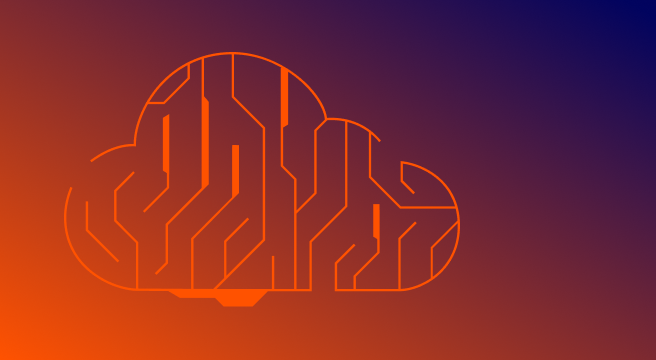DSPM vs. CSPM
Published | August 8, 2025 |
Understanding the difference and why you need both
Cloud security posture management (CSPM) secures infrastructure configurations like workloads and networks, a key component of cloud infrastructure risk reduction and posture management. Data security posture management (DSPM) adds crucial visibility into data itself, where it lives, who can access it and its exposures. Together, they create a comprehensive approach to exposure management and cloud risk, so you can understand infrastructure vulnerabilities and data-centric risks.
Expose key concepts
How are they different: DSPM vs. CSPM?
Midsized to enterprise security teams struggle with a fundamental challenge: how do you protect cloud workloads if you don’t understand what data they have or how data exposure can occur?
Most organizations adopt cloud security posture management (CSPM) to find infrastructure misconfigurations: exposed ports, excessive permissions and insecure storage policies.
CSPM is vital for cloud-native vulnerability management and for reducing your attack surface at the infrastructure layer. But what happens when you get a CSPM alert that a production database instance doesn’t have encryption at rest? You still don't know if that database contains sensitive customer data, which makes it hard to prioritize remediation and understand the misconfiguration’s actual impact.
That’s where data security posture management (DSPM) comes in. It gives you missing data context for true exposure management.
DSPM vs. CSPM isn’t an either/or conversation. It’s a layering strategy. You must see infrastructure and data layers to understand risk and confidently respond.
What does CSPM do?
CSPM reduces cloud infrastructure risk by scanning for misconfigurations. Most security teams use it now because cloud environments are complex and mistakes happen fast. It works across AWS, Azure and GCP to spot configuration problems that can lead to data breaches.
Here's what CSPM typically finds:
- Publicly accessible storage buckets that shouldn’t be public
- Disabled logging or versioning, which prevents you from seeing what happened when things go wrong
- Over-permissioned IAM roles that give people more access than they need
- Unrestricted firewall or network access that leaves doors wide open for threat actors
Security teams rely on CSPM to:
- Catch misconfigurations early instead of finding out about them from a breach notification
- Keep up with compliance standards like CIS Benchmarks without manual checking
- Feed alerts into SIEM/SOAR platforms so everything stays in one place
- Shrink the attack surface across services and workloads, which improves exposure management at the infrastructure level
- Sort risks by priority based on how exposed you are and potential damage
CSPM lets you shift from putting out fires to preventing them.
But CSPM tools do not assess what’s inside those services. They don’t tell you if an open bucket has terabytes of source code or a few test images. This is the gap DSPM fills.
What does DSPM do?
DSPM discovers and protects sensitive data across diverse environments, including cloud, SaaS and potentially on-prem. It gives you crucial data-centric insights for comprehensive exposure management by providing visibility into where data resides, how it flows and its exposures, especially in dynamic, multi-cloud environments.
Unlike traditional vulnerability management that focuses on infrastructure flaws, DSPM directly addresses sensitive data risk. If CSPM shows you infrastructure vulnerabilities, DSPM shows you why they matter in the context of data risk.
DSPM tools help you:
- Discover sensitive data (e.g., intellectual property, financial data, source code)
- Classify data by type, regulation or custom business rules
- Map access paths and entitlements
- Identify over-permissioned access or exposure to the internet
- Correlate risk based on sensitivity, exploitability and business impact
If CSPM shows you what’s wrong, DSPM shows you why it matters.
Key differences between DSPM and CSPM
| Feature | CSPM | DSPM |
|---|---|---|
| 重心 | Infrastructure misconfigurations | Data exposure risk |
| 范围 | Networks, workloads, cloud services | Sensitive data, identities, access paths |
| Risk context | Alerts on misconfigurations | Prioritizes based on data sensitivity and business impact |
| 关键功能 | Baseline enforcement, drift detection, IAM policy review | Data discovery, classification, exposure mapping |
| Tool alignment | CNAPP for unified posture, IaC scanning for preventative security, SOAR for automated response | CIEM, data governance, DLP |
Why combining DSPM and CSPM improves security outcomes
Using DSPM and CSPM together creates a more complete picture of risk and directly supports a more robust exposure management program. Here’s how the combination improves outcomes:
1. Prioritizes by data sensitivity, not alert volume
CSPM, as your infrastructure vulnerability management tool, might generate hundreds of alerts. DSPM helps you filter for the ones that expose actual sensitive data, so you can focus limited resources on the exposures that matter most.
2. Closes the loop on remediation
CSPM might show a misconfigured bucket. DSPM gives you complete context. It tells you what data’s inside, who can access it and how to fix it.
3. Strengthens compliance
CSPM helps demonstrate controls, which are crucial for audit readiness. DSPM gives you data-specific visibility that industry standards require.
4. Improves cross-functional collaboration
DSPM adds business context, indicating what data is at risk and which applications or departments it affects. It allows security, privacy and compliance teams to align on response.
Where DSPM fits in a modern cloud security stack
If your organization uses CSPM already, you likely have infrastructure visibility but lack context into sensitive data risk.
DSPM integrates with tools like:
- Cloud infrastructure entitlement management (CIEM) for identity and access analysis
- Cloud-native application protection platforms (CNAPP) for workload and runtime protection
- Security information and event management (SIEM) to enrich data risk alerts
DSPM helps with data governance and privacy, too. It shows you where sensitive data lives, who's accessing it and ensures consistent policy enforcement across different cloud platforms.
To fully harness the power of DSPM and CSPM, evaluate integrated cloud security platforms that offer unified posture visibility for faster, more effective cloud risk management.
Start with DSPM and CSPM together
CSPM and DSPM are distinct yet complementary, essential for comprehensive cloud security. The combination moves beyond infrastructure-only views to data-centric risk and exposure management.
If you’re evaluating DSPM, consider how it will work alongside your existing CSPM capabilities. Ask vendors:
- Can you correlate infrastructure and data exposure?
- Do you provide risk scoring based on business impact?
- Do you include identity analysis (e.g., IAM, service accounts)?
- Can your DSPM tool visualize data flow and attack paths?
Security teams are moving toward CNAPP and unified exposure management platforms because managing separate tools is complicated, time-consuming and leads to fragmented views of risk. The best platforms combine CSPM and DSPM, so you don't have to jump between dashboards to see what's happening with your cloud infrastructure and data. You'll respond to incidents faster and compliance gets less painful.
Next steps
You need to secure infrastructure and data, not one or the other. CSPM handles configuration issues, while DSPM tracks sensitive data. They work better together than apart.
Leverage DSPM to get critical business context for the numerous alerts CSPM generates.
By understanding which infrastructure misconfigurations directly expose sensitive or regulated data, your security teams can prioritize remediation efforts and focus their limited resources on the risks that matter to your business and compliance obligations.
Effective cloud security also requires strong collaboration across security, privacy and compliance teams, so continuously work toward building a culture of collaboration.
DSPM will give you crucial business context by identifying which specific data is at risk and which departments or applications it affects, so these teams can align their understanding of risk and work together for a unified response.
Want to see how DSPM and CSPM work together inside Tenable Cloud Security? Explore how unified posture visibility helps you reduce cloud risk faster.
DSPM resources
DSPM products
您可加以利用的网络安全新闻
- Tenable Cloud Security
- Tenable One

